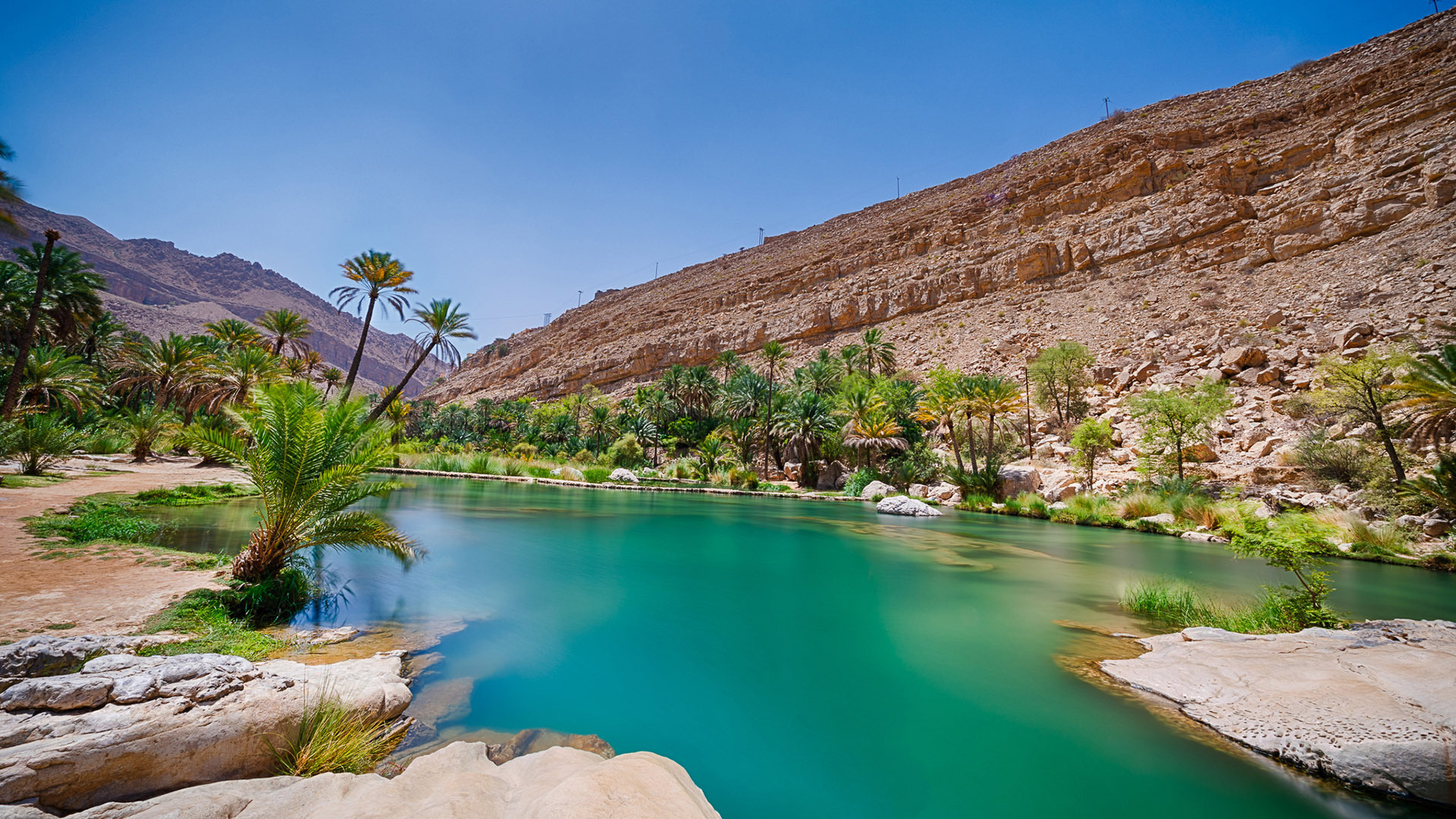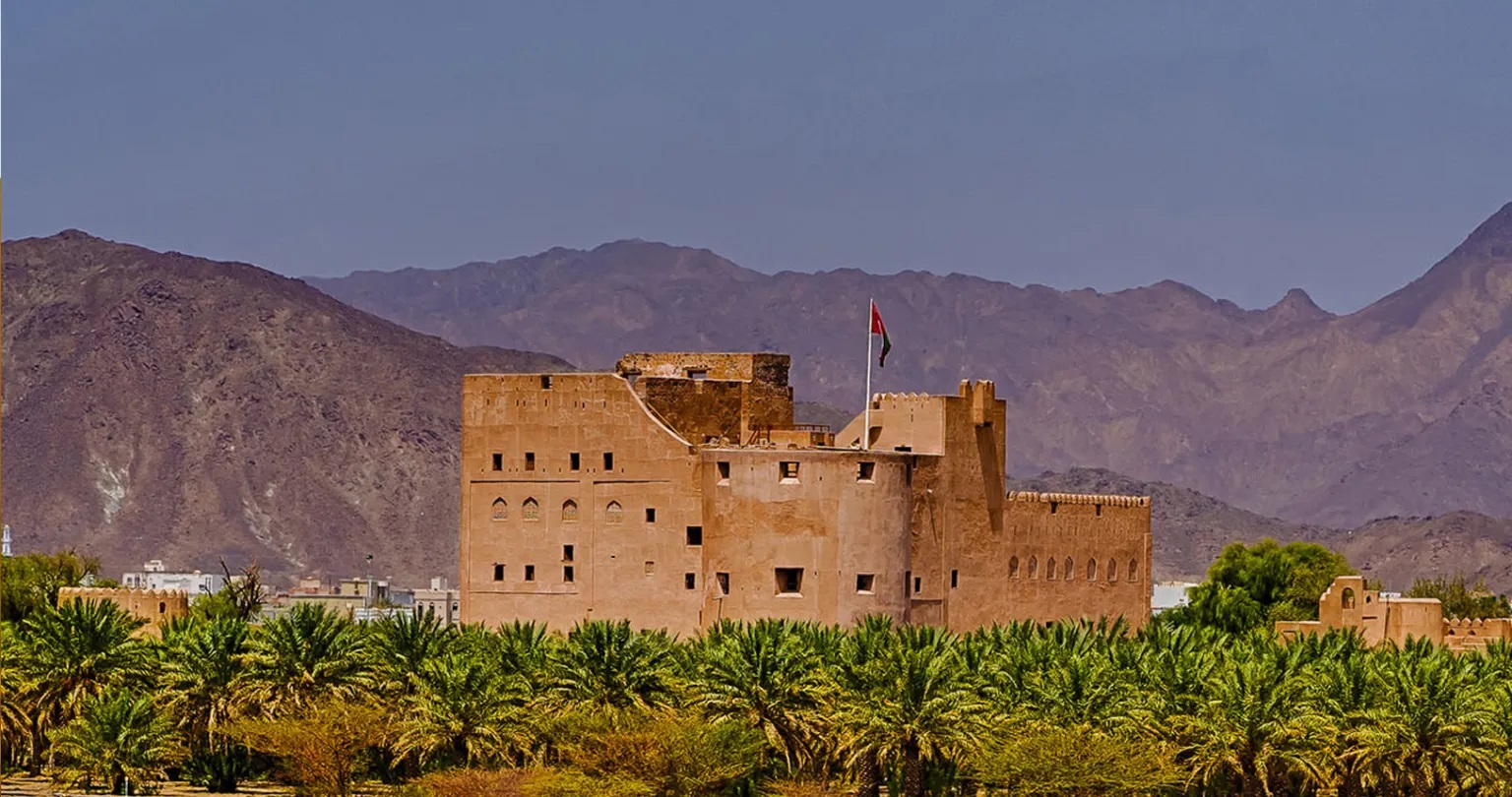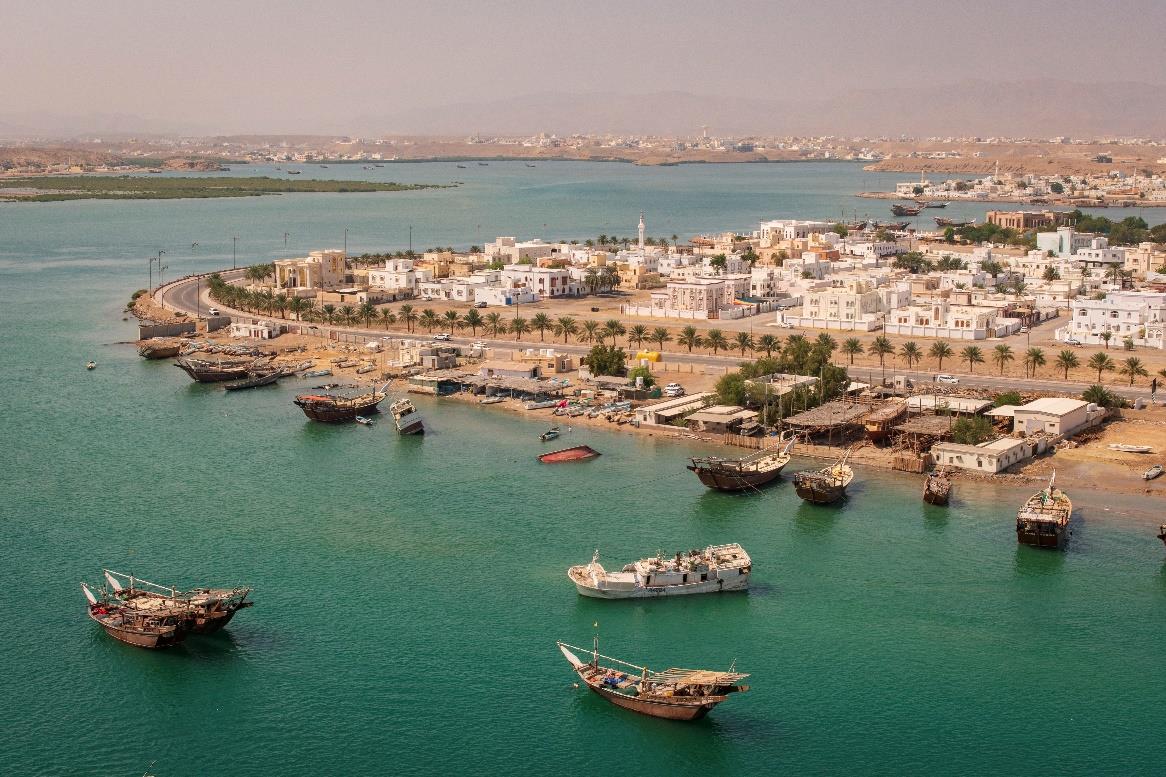Tips for Tourists
Located on the southeastern tip of the Arabian Peninsula, Oman borders the United Arab Emirates, Saudi Arabia, and Yemen. Its 119,500 square miles include varied terrain from steep mountain peaks to pristine beaches, from vast deserts to fertile croplands.
The capital, Muscat, was designated the Cultural Capital for the Arab Region in 2006 by the UN and Arab League Educational, Scientific, and Cultural Organisation. Located on the Sea of Oman, Muscat is the seat of government and the center of the nation’s administration. It is an important trade, finance and business center in the Sultanate due to its distinctive and significant strategic location. Muscat has had the honor of receiving the title of “cleanest Arab city” several times in succession.
Historically, the Sultanate has been a seafaring nation and overlooks three seas — the Arab Gulf, the Gulf of Oman, and the Arabian Sea. Throughout history, Omani ships have sailed to ports in India, Pakistan, China, and Africa, trading commercial goods, crafts, and cultural traditions.
Oman developed rapidly as a result of the country’s renaissance in the 1970’s under the wise leadership of the Late His Majesty Sultan Qaboos bin Said Al Said. Today, Oman is a modern monarchy led by His Majesty Sultan Haitham bin Tariq Al Said. Full suffrage is granted to all citizens over the age of 21, who elect one of two governing councils. Women play an active role in every facet of Omani life. Adult literacy exceeds 75% and although many languages are spoken, Arabic is the official language. Islam is the official state religion and source of legislation for the Basic Statute of the State.
Oil is Oman’s principal export, along with fish and agricultural products, liquid natural gas, and traditional crafts. Oman’s tourism industry plays a growing role in the economy, offering museums, sightseeing, shopping, and international style accommodations. From watersports to desert safaris, from camel races to sanctuaries for turtles, birds, Oryx, and Arabian tigers, Oman truly offers something for everyone.

Applying for Tourist Visa’s
There are 2 types of tourist visa’s, Sponsored and Unsponsored.An unsponsored visa allows a person to enter the country as a tourist without first having to secure permission from a local company.To find out if you are eligible for an unsponsored tourist visa, please go to this website: Click here
If you are eligible for the unsponsored tourist visa, you can apply for the visa online using the eVisa facility. Please find the link for the eVisa facility below: Click here
The application procedure is as follows:
- Register as a new user. Login.
- Fill in the form.
- Attach the necessary documents.
- Make your payment.
- Receive an email notification.
- Print out your email notification.
- Present your printed email notification to the border control office on arrival.
The price for the visa depends on the length of your visit and should range from USD 26 to USD 52 (as of the beginning of 2020).
If you are not eligible for an unsponsored tourist visa, please contact us, and we will inform you of your eligiblity for a sponsored tourist visa.
If you are eligible for a sponsored tourist visa, communicate your details to us, and we can make the necessary arrangements for you.Climate Considerations
Summer begins in mid-April and lasts until October. The highest temperatures are registered in the interior, where readings of more than 50° C in the shade are common. On the Al Batinah plain, summer temperatures seldom exceed 46° C, but, because of the low elevation, the humidity may be as high as 90 percent. The mean summer temperature in Muscat is 33° C, but the gharbi (literally, western), a strong wind that blows from the Rub al Khali, can raise temperatures from the towns on the Gulf of Oman by 6° C to 10° C.
Winter temperatures are mild and pleasant, ranging between 15° C and 23° C.
Precipitation on the coasts and on the interior plains ranges from twenty to 100 millimeters a year and falls during mid and late winter. Rainfall in the mountains, particularly over Al Jabal al Akhdar, is much higher and may reach 700 millimeters.
Because the plateau of Al Jabal al Akhdar is porous limestone, rainfall seeps quickly through it, and the vegetation, which might be expected to be more lush, is meager. However, a huge reservoir under the plateau provides springs for low-lying areas. In addition, an enormous wadi channels water to these valleys, making the area agriculturally productive in years of good rainfall.
Dhofar, benefiting from a southwest monsoon between June and September, receives heavier rainfall and has constantly running streams, which make the region Oman’s most fertile area.
Best Tour Operators in Oman
Best Tour Operators in Oman. Beste Reiseveranstalter im Oman – I migliori tour operator dell’Oman -Beste touroperators in Oman
Beste Reiseveranstalter im Omant
Best Tour Operators in Oman. Beste Reiseveranstalter im Oman – I migliori tour operator dell’Oman – Beste touroperators in Oman. We’ll give you the best tour experience of what Oman has to offer. Because Muscat, Oman’s port capital, sits on the Gulf of Oman and it’s surrounded by beautiful mountains, sea and desert.
Beste Reiseveranstalter im Oman
I migliori tour operator dell’Oman
Beste touroperators in Oman.
Best Tour Operators in Oman. Beste Reiseveranstalter im Oman – I migliori tour operator dell’Oman -Beste touroperators in Oman I’ll start by telling you what transition words are. After that, I’ll tell you why you should always use them.She tried really hard to entertain her guests. Similarly, he put all his heart and soul in cooking a great dinner.In conclusion, transition words are an important aspect of SEO copywriting.I’m tired. Therefore, I’m going to bed.Beste touroperators in Oman.
I am not fond of fruit. However, I do like bananasThere are many reasons to exercise regularly. Above all, it keeps you healthy.Today, I’m going to write a post. In addition, I’m recording some video lessons.Oman is one of the best places on Earth. You can relax or go out on an adventure of a lifetime. Oman is incredible with the desert, mountains, ocean and well known for its sink hole Best Professional Tours in Oman.I migliori tour operator dell’Oman
Best Tours Oman
Private Tours in Oman
Travelling can be a nightmare but with Desert Flower Tours you can be assured that your trip will be a dream and majestic place. Desert Flower Tours are well known and very professional and have been in the industry for over ten years. Take a tour with them and you’ll be amazed at the beautiful landscapes, ocean and beauty City of Oman.Best Tour Operators in Oman
Private Tours in Oman. In Muscat’s Grand Mosque, there is a beautiful hand-loomed carpet; it was once the world’s largest rug until Abu Dhabi’s Grand Mosque, in the United Arab Emirates, pinched the record. This is poignant because Oman doesn’t boast many ‘firsts’ or ‘biggests’ in a region bent on grandstanding.Oman DMC
What it does boast, with its rich heritage and embracing society, is a strong sense of identity, a pride in an ancient, frankincense-trading past and confidence in a highly educated future.Best Professional Tours in Oman.Oman Desert Safari
Best Tour Operators in Oman
Oman DMC, For visitors, this offers a rare chance to engage with the Arab world without the distorting lens of excessive wealth. Oman’s low-rise towns retain their traditional charms and Bedouin values remain at the heart of an Omani welcome. With an abundance of natural beauty, from spectacular mountains, wind-blown deserts and a pristine coastline, Oman is the obvious choice for those seeking out the modern face of Arabia while wanting still to sense its ancient soul Best Professional Tours in Oman.Best Tour Operators in Oman
Lovely tours from the best tour operators. You’ll have the best experience from our team.Oman Desert Safari
For visitors, this offers a rare chance to engage with the Arab world without the distorting lens of excessive wealth. Oman’s low-rise towns retain their traditional charms and Bedouin values remain at the heart of an Omani welcome. With an abundance of natural beauty, from spectacular mountains, wind-blown deserts and a pristine coastline, Oman is the obvious choice for those seeking out the modern face of Arabia while wanting still to sense its ancient soul.migliori tour in OmanOman Desert Safari
Oman Tourism Company
Private Tours in Oman
Best Professional Tours in Oman Quietly imposing from the outsid.migliori tour in OmanMwasalat buses stop outside the mosque.Oman Tourism Company
Best Professional Tours Oman
Guarding entrance the harbour east, Al Jalali Fort built during the Portuguese occupation 1580s Arab foundations. fort accessible only via asteep flight steps. such, made perfect prison or number years, now museum Omani heritage. Admission is strictly by permit only – apply to the Ministry National Heritage and Culture, through contact page ministry website.During palace military occasions, bagpipers perform from fort battlements, the royal dhow yacht sailed infull regalia into the harbour. With fireworks reflected in the water, it makes a spectacular sight Best Professional Tours in Oman.Beste touren oman
Private Tours in Oman
Best Professional Tours in Oman
Best Professional Tours Oman Housed imposing new building heart Old Muscat, National Museum makes fitting consort for Sultan’s Palace opposite. emphasis contemporary museum quality rather than quantity, with space, light, height used enhance selective displays showcasing heritage Oman. Giant screens high-tech devices bring artefacts alive. migliori tour in Oman Best Professional Tours in Oman.Oman in retropective
A few well-chosen words convey a great deal of meaning. The city disposes of waste materials in a variety of ways. migliori tour in Oman In conclusion, transition words are an important aspect of SEO copywriting.I’m tired. Therefore, I’m going to bed.We’re letting you go. In other words, you’re fired.
In conclusion, transition words are an important aspect of SEO copywriting.I’m tired. Therefore, I’m going to bed.We’re letting you go. In other words, you’re fired.Best Tour Operators in Oman
I am not fond of fruit. However, I do like bananasIn the evening, I like to relax. For instance, I enjoy watching TV.I’m tired. Therefore, I’m going to bed.I am not fond of fruit. However, I do like bananasIn the evening, I like to relax. For instance, I enjoy watching TV.My father built this house.I’m tired. Therefore, I’m going to bed. Best Professional Tours in OmanSpielberg directed the movie ETTips of Tourists

 A great deal of meaning is conveyed by a few well-chosen words.read more
A great deal of meaning is conveyed by a few well-chosen words.read more Contact us
Facebook | Twitter | Google+ | Pinterest | Instagram
Contact us
Facebook | Twitter | Google+ | Pinterest | Instagram










